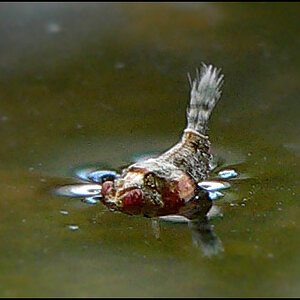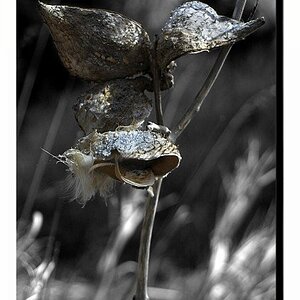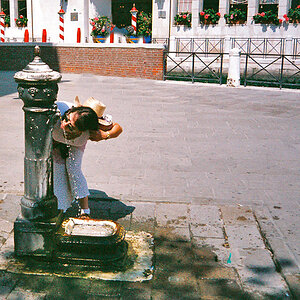JSD
TPF Noob!
- Joined
- Aug 9, 2009
- Messages
- 138
- Reaction score
- 0
- Location
- Colorado
- Can others edit my Photos
- Photos NOT OK to edit
I posted this in another thread but now that I see there are several other threads on the subject I thought it might be worth its own thread. Dwig gave a better technical description of what determines bokeh, but I hope mine helps to clear up the difference between the two terms:
I think that there is a miss use of the term "bokeh". Bokeh is a word derived from the Japanese word boke, pronounced so that it sort of rhymes with okay and means out of focus (or it can also mean senile). What it has come to mean in photography is the nature or charcteristics of the out of focus area in a picture. The term depth of field refers to the zone of focus, the area in a picture that is in sharp focus, not the characteristics of the out of focus areas. Bokeh is determined mostly by the shape of the leaves of the diaphragm, and cannot be controlled by the photographer (unless, as Dwig said, he buys a differant lens). Depth of field is controlled by the photographer when choosing an aperture, and by the focal length of the lens. Wide angle lenses have inherently more depth of field and telephotos, less. For a given lens a smaller aperture, for example f16 will have deep depth of field, and a wide aperture, such as f2.8, much less. Lenses used for landscape are usually short focal length, stopped down to a small aperture, say f16 or f22, hence the great depth of field between the flowers in the foreground and the snowcapped peaks in the distance. A shot of a bird, with limited depth of field where only the bird is sharp with the background blurry was likely taken with a telephoto lens at a wide aperture, say f2.8 or f4. Now the nature or characteristics of the blurry part of the bird shot, for example a point of light, although out of focus, might be nicely rounded or it may have angular edges, that is bokeh.
I think that there is a miss use of the term "bokeh". Bokeh is a word derived from the Japanese word boke, pronounced so that it sort of rhymes with okay and means out of focus (or it can also mean senile). What it has come to mean in photography is the nature or charcteristics of the out of focus area in a picture. The term depth of field refers to the zone of focus, the area in a picture that is in sharp focus, not the characteristics of the out of focus areas. Bokeh is determined mostly by the shape of the leaves of the diaphragm, and cannot be controlled by the photographer (unless, as Dwig said, he buys a differant lens). Depth of field is controlled by the photographer when choosing an aperture, and by the focal length of the lens. Wide angle lenses have inherently more depth of field and telephotos, less. For a given lens a smaller aperture, for example f16 will have deep depth of field, and a wide aperture, such as f2.8, much less. Lenses used for landscape are usually short focal length, stopped down to a small aperture, say f16 or f22, hence the great depth of field between the flowers in the foreground and the snowcapped peaks in the distance. A shot of a bird, with limited depth of field where only the bird is sharp with the background blurry was likely taken with a telephoto lens at a wide aperture, say f2.8 or f4. Now the nature or characteristics of the blurry part of the bird shot, for example a point of light, although out of focus, might be nicely rounded or it may have angular edges, that is bokeh.


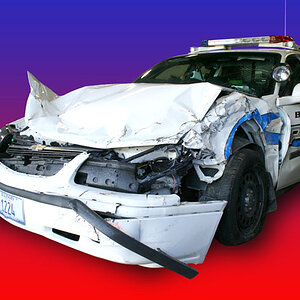
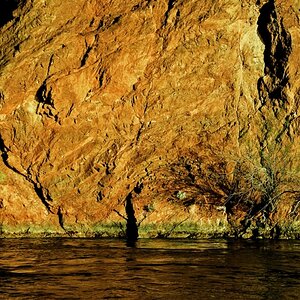
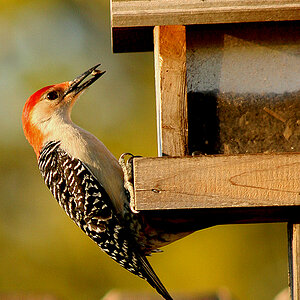
![[No title]](/data/xfmg/thumbnail/36/36134-64e77d33cc4c68e1253adc2879f24a96.jpg?1619737387)

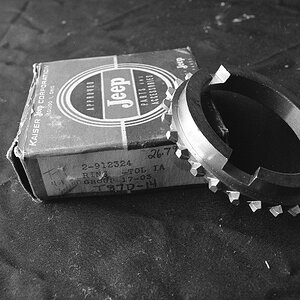
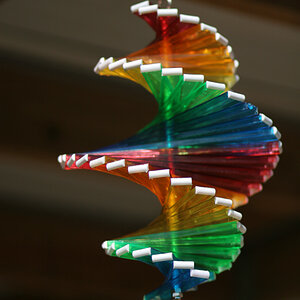
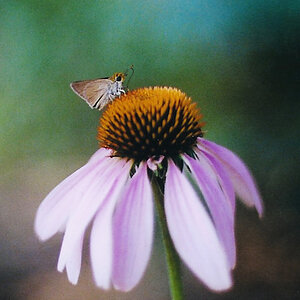
![[No title]](/data/xfmg/thumbnail/32/32926-ec27ecead8c80d803404500d8f888dbf.jpg?1619735754)
